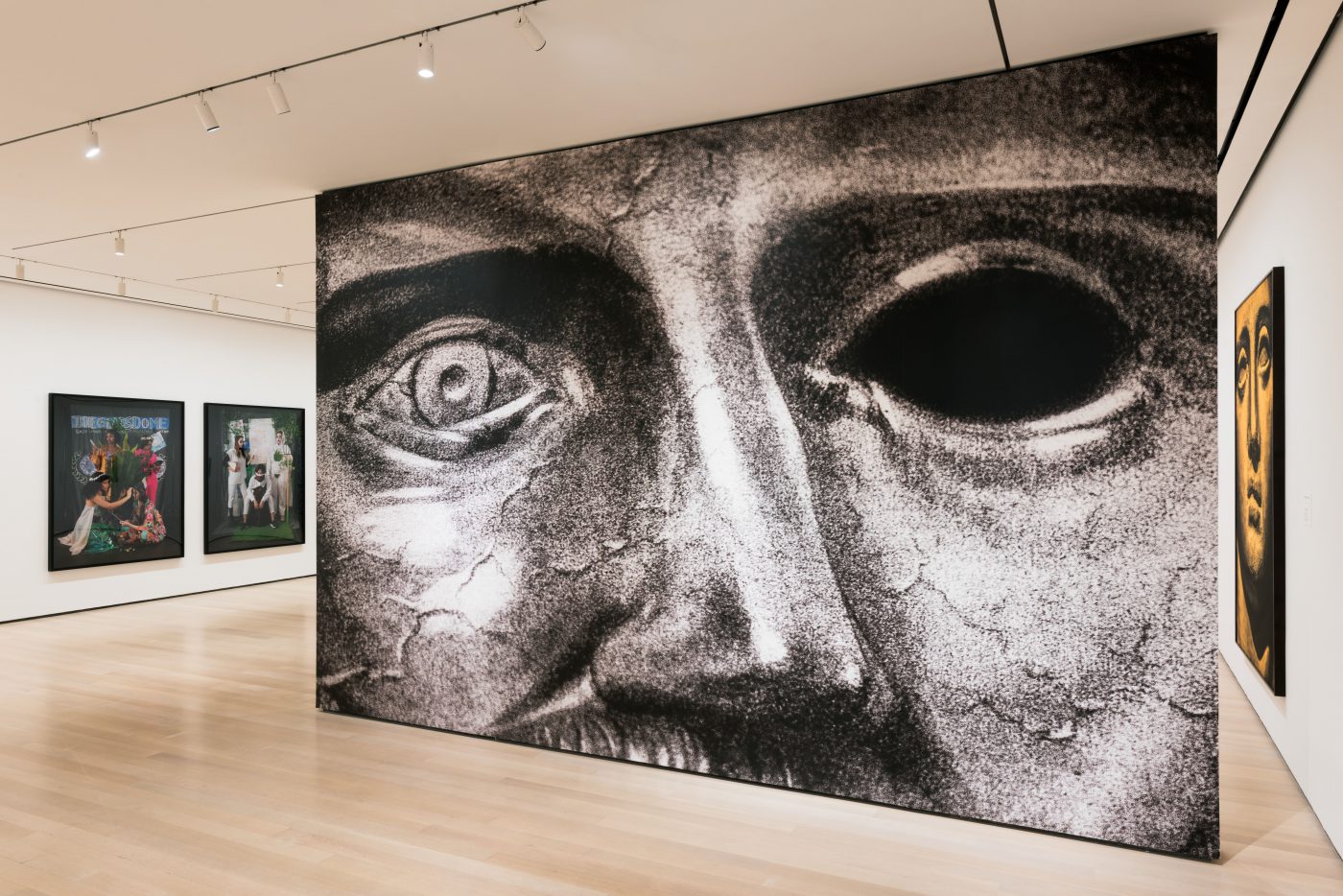
Installation view of Being: New Photography 2018 at The Museum of Modern Art, New York, March 18, 2018–August 19, 2018. © 2018 The Museum of Modern Art. Photo: Martin Seck
Being: New Photography 2018
It is the survey of all photo surveys: New Photography at the MoMA. This year’s selection includes the work of 16 artists showing how photography is trying to capture what it means to be a human.
There is a small black and white photograph at my eye level, indistinctive from the other images hanging on the same wall. The photographs in the back room of MoMA’s exhibition Being: New Photography 2018 create a visual collage. They form, evidently, one body of work. But there is something in this particular photograph in a thin red frame that draws my attention. It shows a desk stacked with piles of books, in front of which two chairs facing each other hold a roof-like shaped dark mattress. A human figure is curled up underneath. We can only see its bend legs protruding from under the table. Is he sleeping? Is he hiding? Is he alive? The scene reminds me of a photograph by Roger Ballen of a boy squeezed between two identical armchairs or Erwin Wurm’s series One Minute Sculptures. But even more, it reminds me of my own favorite play from childhood: building all sorts of tent-like personal shelters in my family house.
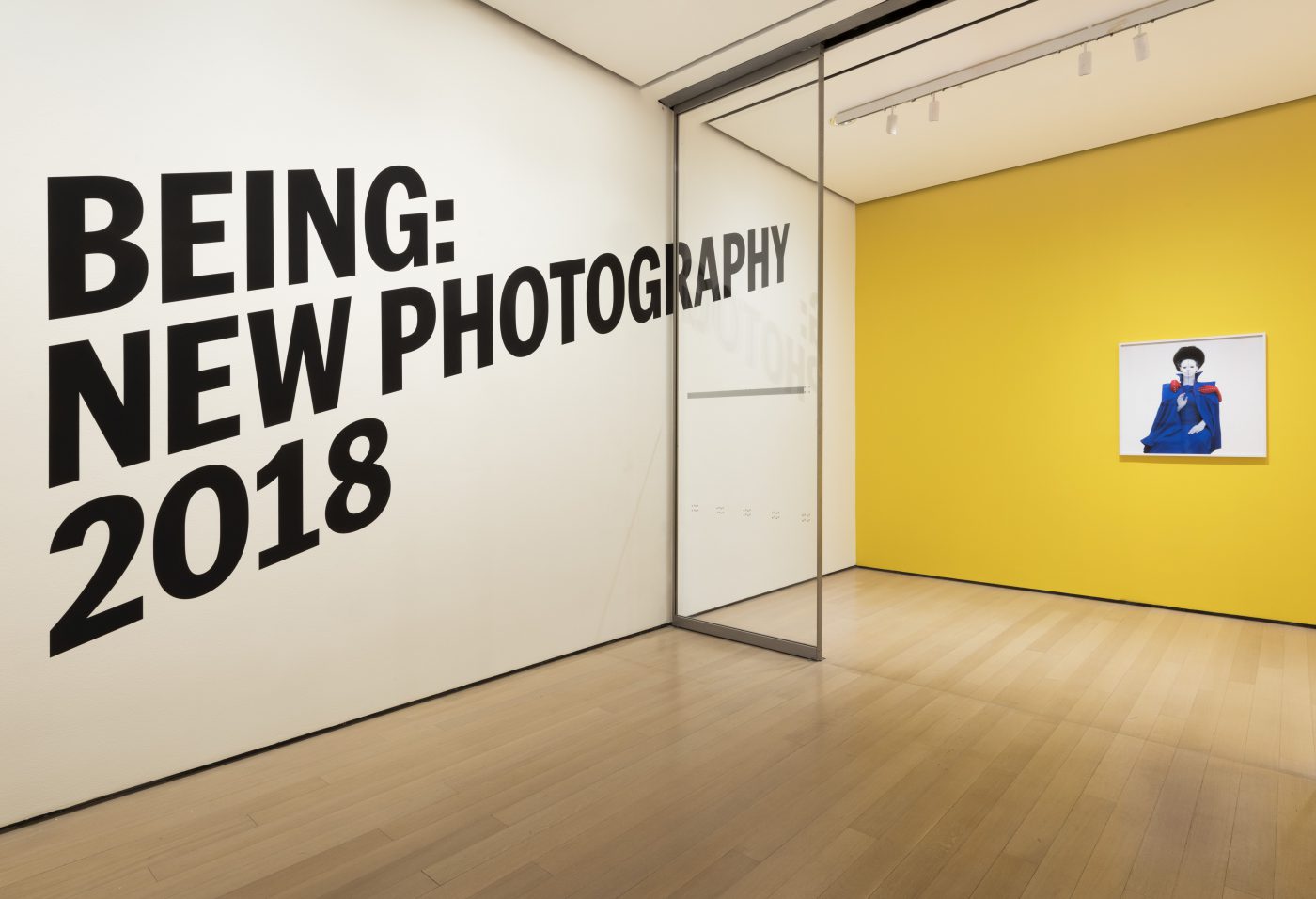
Installation view of Being: New Photography 2018 at The Museum of Modern Art, New York, March 18, 2018–August 19, 2018. © 2018 The Museum of Modern Art. Photo: Martin Seck
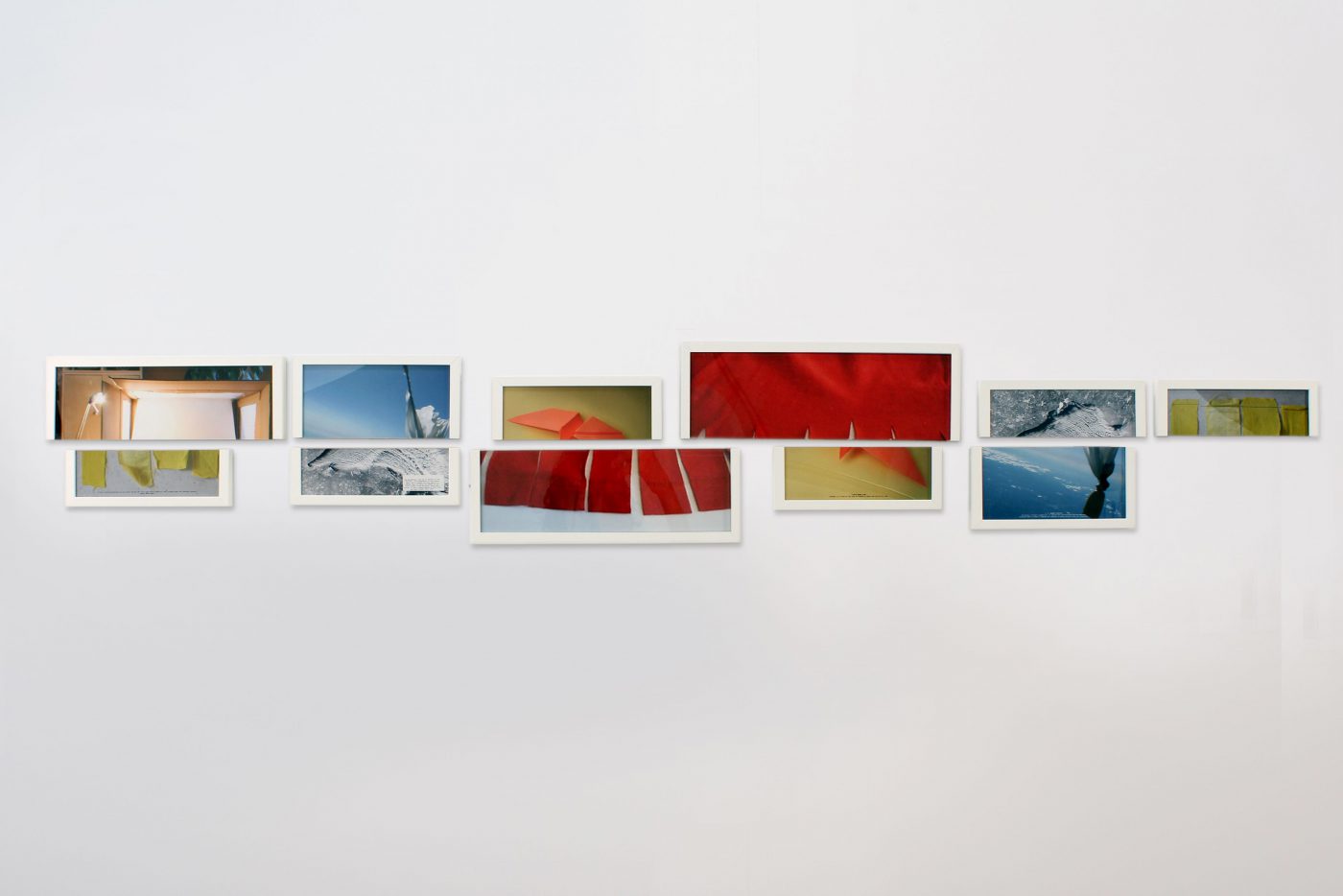
Shilpa Gupta. Untitled. 2014. Pigmented inkjet prints in split frames, 18 × 103″ (45.7 × 261.6 cm). Courtesy the artist and GALLERIA CONTINUA, San Gimignano, Beijing, Les Moulins, and Habana. © 2018 Shilpa Gupta
The author of this image, Joanna Piotrowska, was born in Poland in the 1980s, just like me, and most likely she enjoyed constructing temporary fortresses out of furniture and blankets as much as I did. Especially because we both grew up in a world free from entertaining internet and the virtual universe of electronic devices. A cultural anthropologist would probably have something to say here. Piotrowska’s images of child-like “forts” (hung together with three photographs from her beautiful ill at ease Frowst series from 2013-14) reveal not only her personal memories and nostalgia for the time when kids did not have to play games of the type “leave your phone for an hour to see that the off-line world can be even more exciting”, but our desire to feel safe and protected even in familiar spaces (from our bedroom to email account).
Piotrowska’s works, as well as the works of the other sixteen artists in the exhibition, draw an anthropological portrait of their graphic-saturated generation (all the participants of this show were born between 1974 and 1987). The discussion on the era of images is as long and complex as the “absurdly broad theme”[1], as The New Yorker described it, of this year edition of New Photography, which “asks how photography is trying to capture what it means to be a human”, and how individuals are depicted and perceived today.
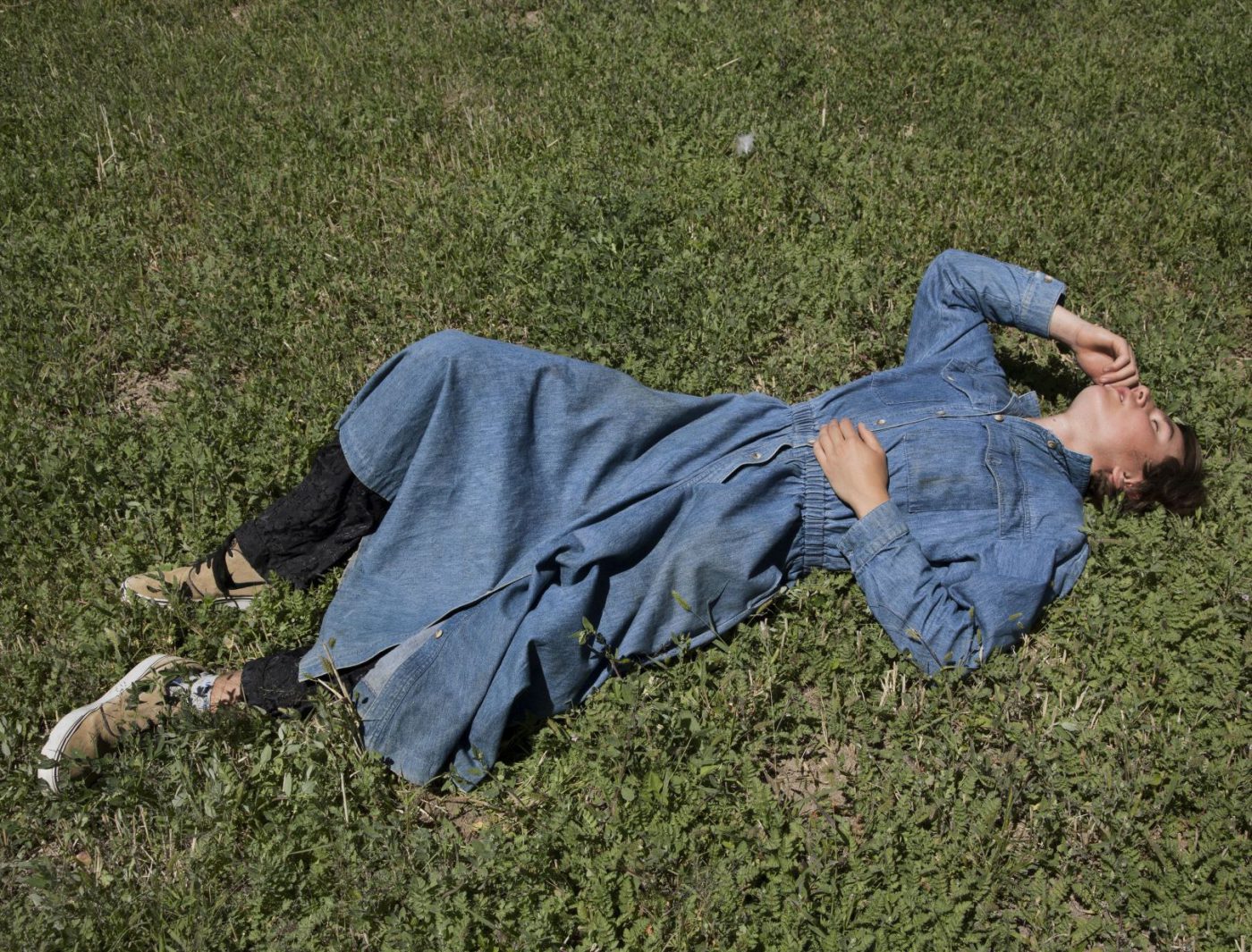
Sam Contis. Denim Dress. 2014. Pigmented inkjet print, 31 5/8 × 41 11/16″ (80.3 × 105.9 cm). The Museum of Modern Art, New York. Acquired through the generosity of Thomas and Susan Dunn © 2018 Sam Contis
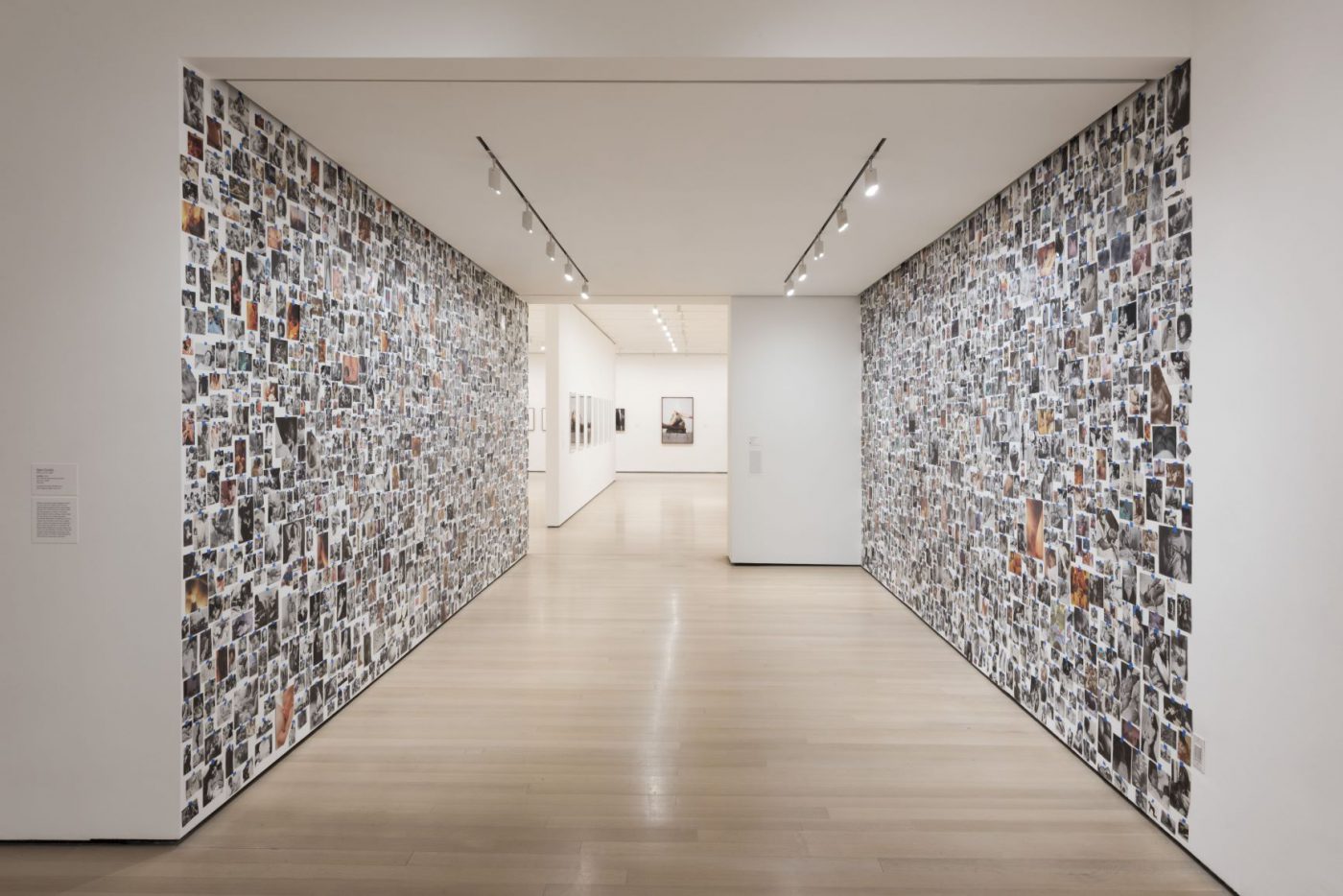
Installation view of Carmen Winant’s My Birth, 2018, installed as part of Being: New Photography 2018 at The Museum of Modern Art, New York, March 18, 2018–August 19, 2018. © 2018 The Museum of Modern Art. Photo: Martin Seck
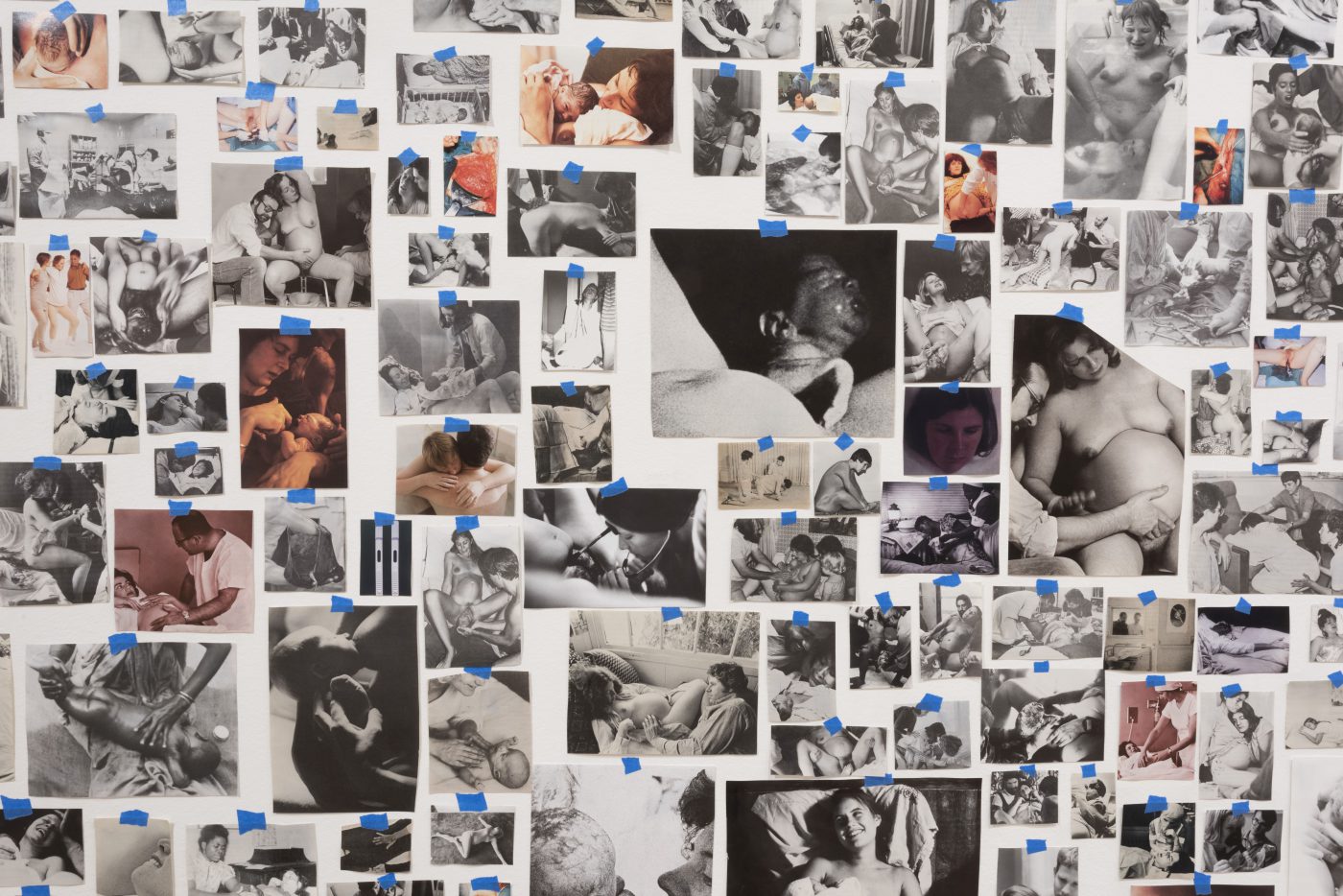
Carmen Winant. My Birth (detail). 2018. Site-specific installation of found images, tape. The Museum of Modern Art, New York. Photo: Martin Seck. © 2018 Carmen Winant
“The Picture People need proof of their existence, empirical proof – and voila, photography”, said writer Lynne Tillman in an interview for Hyperallergic[2] about her latest novel Men and Apparition (published in March this year, at the time of the opening of Being: New Photography 2018) that describes the world from the point of view of an anthropologist and ethnographer living in the “Image Era”. Ezekiel Stark is in his late thirties and represents a generation that is torn between the fascination with analog family photographs as well as the digital cult of iPhone shots and perfect Instagram filters, trying to find in both the sense of his existence. “The elusiveness of photographs is part of the problem for him. He is trying to learn things from a photograph, trying to figure out who his mother and father are from photographs, and he cannot.”
Just like Hương Ngô and Hồng-Ân Trương in their collaborative work The opposite of looking is not invisibility. The opposite of yellow is not gold. They retrospect their own family albums, re-photographing the images of their mothers taken in the 1970s (when both of them independently immigrated to America from Vietnam), and reflecting on cultural invisibility. Or like Indian artist Shilpa Gupta, who sliced two photographs representing people who, because of various reasons, changed their surname (my grandmother used to cut off men she did not love anymore from her pictures). Or Em Rooney, who makes out of images selected form her personal archive special mementos (hand colored silver gelatin prints in unique crafted artifact frames). Or like Stephanie Syjuco, who covers faces of “migrants” on passport-style photos. Or Sam Contis, who allows us to look at the strange beauty of micro- and macrocosmic of the western landscape in her two-channel video and photographs from the series Deep Springs (the title was taken from the name of an all-male college in California). “It has always been thought of as a place where one can try on new identities, reinvent or rediscover oneself. And photography has always been used as a tool to construct new ideas about place and self, especially in the West. In that way, the work is about photography’s own role in the process of coming to understand ourselves and our environment.”[3], said the artist.
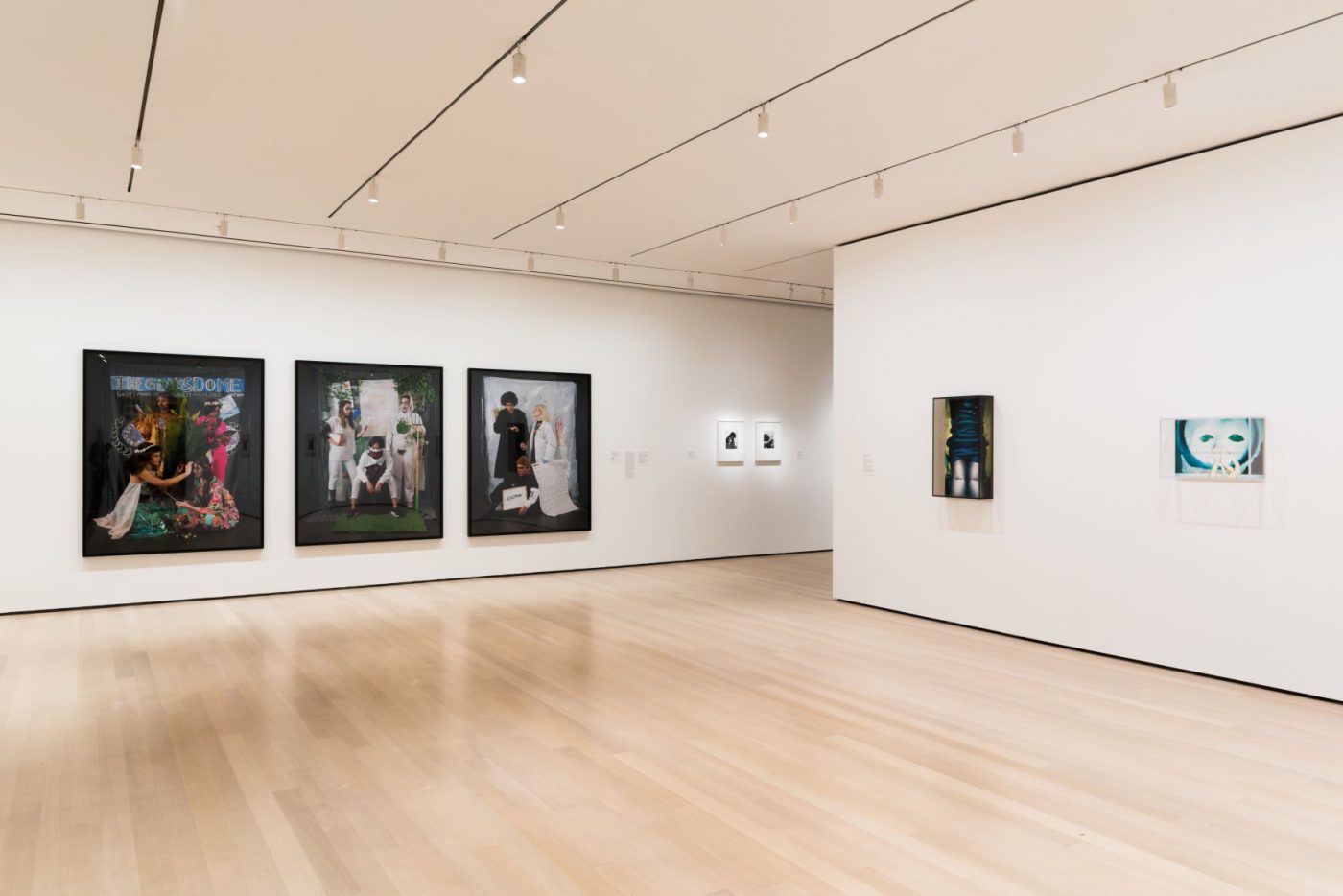
Installation view of Being: New Photography 2018 at The Museum of Modern Art, New York, March 18, 2018–August 19, 2018. © 2018 The Museum of Modern Art. Photo: Martin Seck
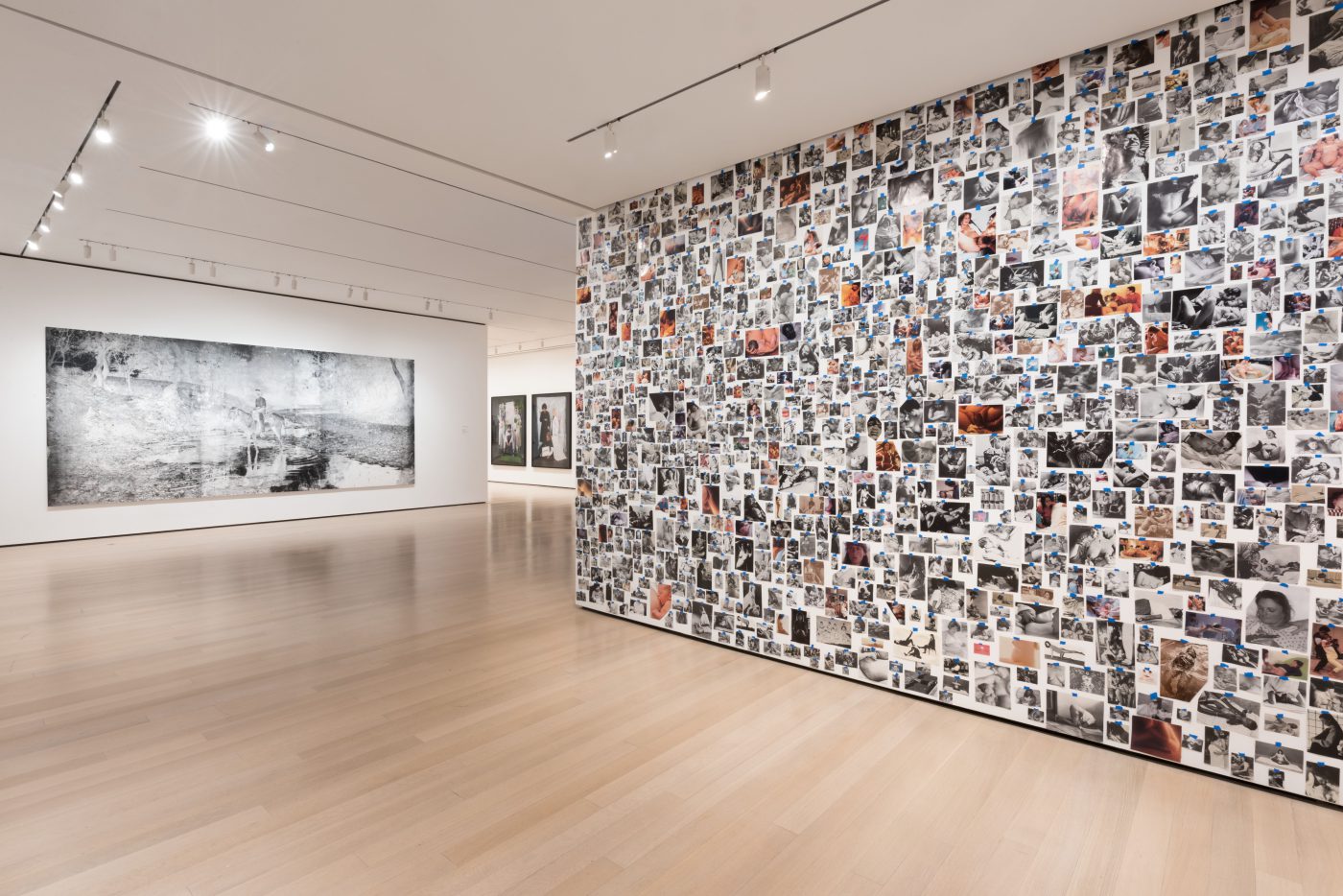
Installation view of Being: New Photography 2018 at The Museum of Modern Art, New York, March 18, 2018–August 19, 2018. © 2018 The Museum of Modern Art. Photo: Martin Seck
“This is really the first time I used purely photography in a workshop setting. There are definitely complications with the use of this medium to represent a process but as the project was commissioned for a photography exhibition what I thought about was: what can a portrait do?” –Adelita Husni-Bey told me about her work The Council, for which she conducted a workshop with a group of teenagers from MoMA’s Digital Advisory Board, imagining the future of art institutions like the MoMA itself. I have to admit that when I heard that some of the works were commissioned for this exhibition from artists whose primary medium is not photography I was skeptical: how can those works “present urgent and compelling ideas in recent photography and photo-based art” as the New Photography biennial aims?
But, as another artist shown at Being: New Photography 2018, Sofia Borges, stated: “Photography can be used as a tool to mold our sense of reality.” For Zeke, the protagonist of Men and Apparition, his own camera gives him a sense of subjection over the world: “I was engaged in me, what was before me, which became a strange ownership, probably symptomatic or evidence of a little person’s pride in what he believes he controls. Silly tot.”[4] Indeed, we are aware that the image itself is already a constructed world, and thus a fiction in which we believe. “People think they are going to get the truth with a capital T with non-fiction and do not believe any more that a novel can tell the truth. To me that is very sad”[5], Tillman said.
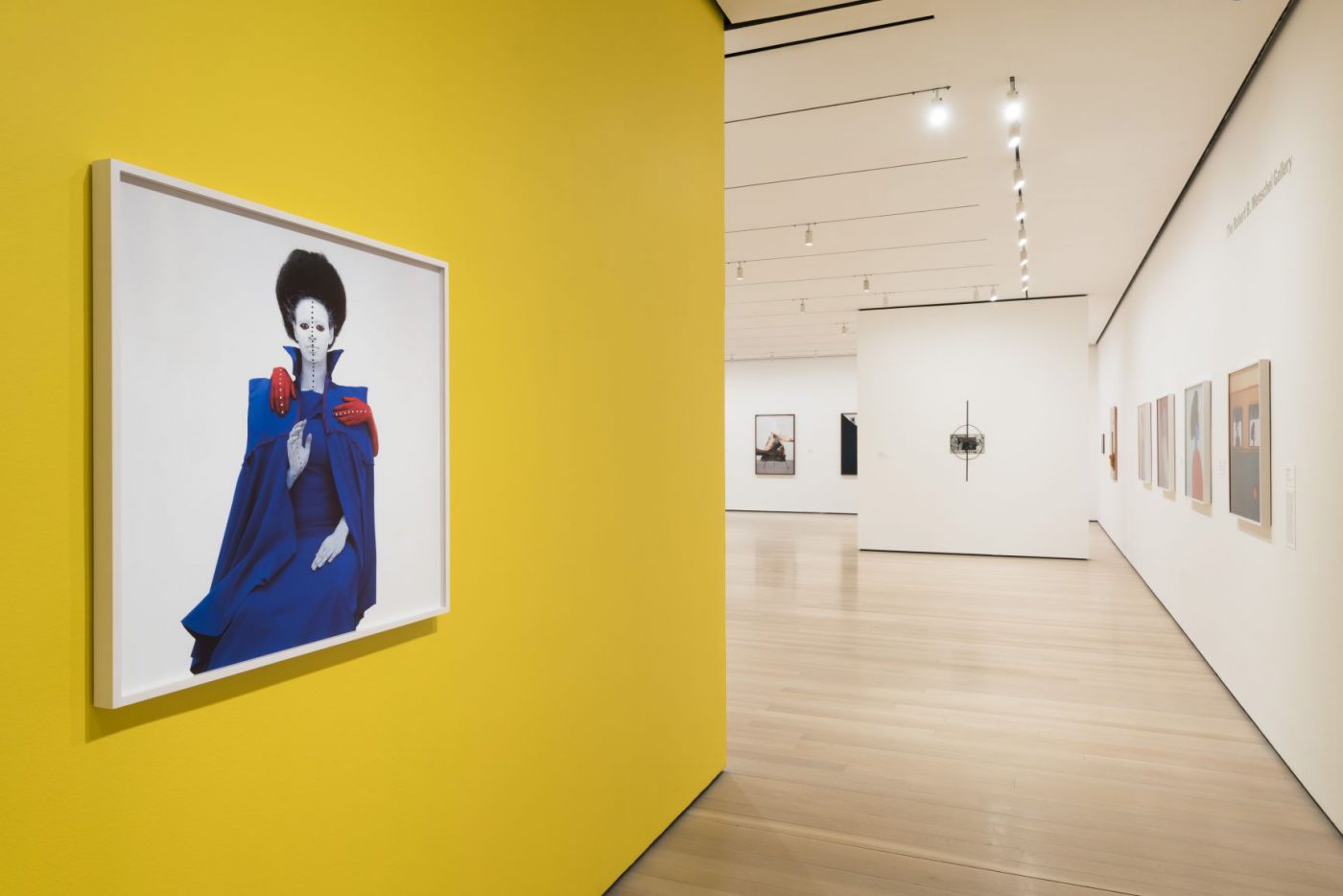
Installation view of Being: New Photography 2018 at The Museum of Modern Art, New York, March 18, 2018–August 19, 2018. © 2018 The Museum of Modern Art. Photo: Martin Seck
If you are hoping to find some controversy or direct commentary on internet-driven Instagram-fed photo culture at Being: New Photography 2018, you may feel disappointed. But the truth is that we are too far along after the post (post post?) internet era to debate on that. It has already become just another medium of expression, which is based on portraiture and visual representation more than anything before. Being: New Photography 2018 does not try to make a statement or even pose any particular questions, rather, it tracks the contemporary consciousness, and it is a mediation on current condition of what we call humanity. So, when I ask myself the same question as above again, now it does not really matter anymore. Photography is a state of being.
LEES EEN UITGEBREID INTERVIEW MET ADELITA HUSNI BEY IN METROPOLIS M NR 4 EXCHANGE-FOTOGRAFIE-EINDEXAMENS 2018. NU IN DE WINKEL. ALS JE NU EEN JAARABONNEMENT AFSLUIT STUREN WE JE DIT NUMMER GRATIS OP. MAIL JE NAAM EN ADRES NAAR [email protected]
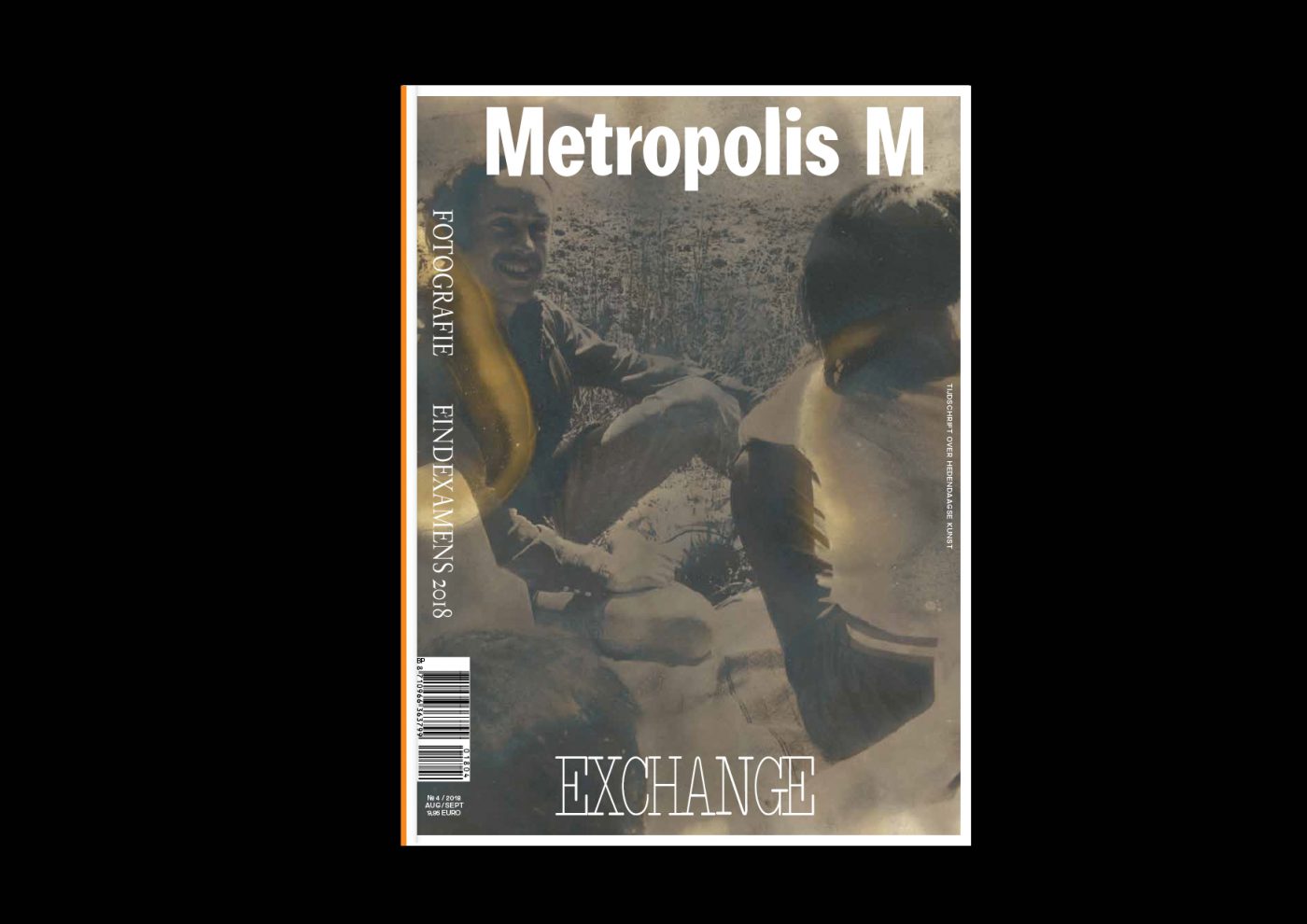
All images courtesy MoMA, New York
Being: New Photography 2018, MoMA New York City, March 18th – August 19th
[1] https://www.newyorker.com/goings-on-about-town/art/being-new-photography-2018
[2] https://hyperallergic.com/433278/lynne-tillman-men-and-apparitions-soft-skull-press-2018/
[3] https://www.americansuburbx.com/2017/07/sam-contis-interview-deep-springs.html
[4] Lynne Tillmann, Men and Apparition, Soft Scull Press, 2018
[5] https://www.ssense.com/en-us/editorial/art/imagining-men-with-lynne-tillman
Weronika Trojanska
is an artist and art writer


